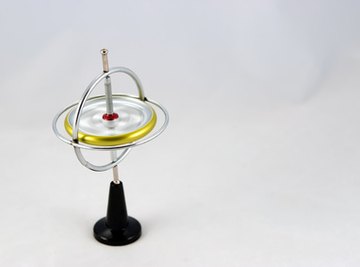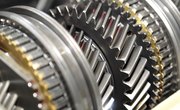
Most people's familiarity with gyroscopes comes from playing with a string-operated gyroscope or top as a child. However, gyroscopes are an amazingly common part of people's lives, with applications in transportation and even consumer electronics. Today, modern gyroscopes come in three general varieties: mechanical gyroscopes, gas-bearing gyroscopes and optical gyroscopes. Mechanical and gas-bearing gyroscopes work on the principle of conservation of angular momentum to detect movement, though some use other principles.
Mechanical Gyroscopes
Mechanical gyroscopes are perhaps the most common or familiar type of gyroscope. Children's toy gyroscopes fit into this category, which includes any gyroscope that relies on a ball bearing to spin. These types of gyroscopes are used in navigation of large aircraft and in missile guidance and control. Since they are typically noisier than other forms of gyroscopes, they are often replaced with more modern forms of gyroscopes.
Gas-Bearing Gyroscopes
In gas-bearing gyroscopes the rotor is suspended by pressurized gas, reducing the amount of friction between moving parts. These types of gyroscopes were used by the NASA in the development of the Hubble Telescope. According to NASA, the gas-bearing gyroscopes are much quieter than other forms of gyroscopes and also have greater accuracy. In fact, NASA states the gyroscopes aboard the Hubble Telescope are among the most accurate in the world.
Optical Gyroscopes
Unlike mechanical or gas-bearing gyroscopes, optical gyroscopes do not rely on a rotating wheel or bearing. Optical gyroscopes are not based on the conservation of angular momentum. These gyroscopes use two coils of fiber optic cable spun in different orientations. According to the Sagnac Effect, when the device is tilted, the two beans of light will travel different distances, which can be measured. Since there are no moving parts, fiber optic gyroscopes are very durable and are used in modern rocketry and spacecraft.
References
About the Author
Writer, photographer and world traveler James Croxon is a jack of all trades. He began writing in 1998 for the University of Michigan's "The Michigan Times." His work has appeared in the "Toronto Sun" and on defenselink.com and globalsecurity.org. Croxon has a bachelor's degree in English from the American Military University.
Photo Credits
gyroscope spinning on white image by Gramper from Fotolia.com
